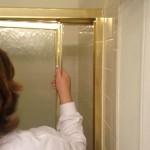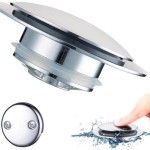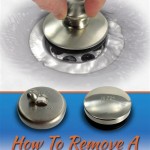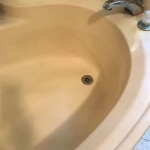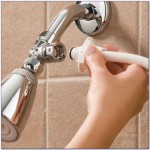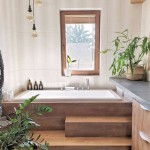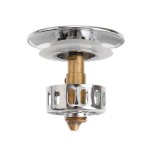Step-Down Bathtub Shower: Design, Functionality, and Considerations
The step-down bathtub shower, a variation on the traditional bathtub shower combination, incorporates a recessed or sunken tub surrounded by a shower area. This design aims to blend the benefits of a relaxing bath with the convenience of a quick shower, often prioritizing ease of access and aesthetic appeal. The architectural treatment creates a distinctive focal point within the bathroom, while potentially addressing specific accessibility needs or spatial limitations.
This article will delve into the different aspects of the step-down bathtub shower, exploring its design variations, advantages, disadvantages, installation considerations, and the factors that influence its suitability for various bathroom styles and user requirements. Understanding these elements is crucial in determining whether a step-down bathtub shower is the appropriate choice for a bathroom renovation or new construction project.
Design Variations and Styles
Step-down bathtub showers are not a monolithic design; they come in various shapes, sizes, and styles to suit different bathroom layouts and aesthetic preferences. The depth of the tub itself can vary significantly, influencing the overall bathing experience. Some designs feature a shallow recession suitable for quick soaks while others offer a deeper basin for full immersion.
The surrounding shower area is another point of design variation. It can be fully enclosed with glass panels, partially enclosed with a shower screen, or left open as a wet room concept. The choice of enclosure influences the bathroom’s perceived spaciousness, ventilation, and ease of cleaning. A fully enclosed shower offers better insulation and containment of water spray, while an open design requires careful attention to waterproofing and drainage.
Material choices play a crucial role in defining the overall style of the step-down bathtub shower. Acrylic tubs are lightweight, durable, and come in a wide range of colors, while cast iron tubs offer superior heat retention and a classic aesthetic. The surrounding shower area can be finished with tile, stone, or waterproof panels, each offering distinct visual and tactile qualities. Integrated seating, shelving, and grab bars can also be incorporated to enhance functionality and accessibility.
The overall architectural style of the step-down bathtub shower can range from minimalist and modern to traditional and ornate. Clean lines, simple geometric shapes, and neutral colors characterize modern designs, while traditional designs often incorporate decorative moldings, claw feet, and rich, warm tones. The style should harmonize with the overall aesthetic of the bathroom and the rest of the home.
Functionality and Accessibility
The primary advantage of a step-down bathtub shower is its potential for improved accessibility. Depending on the design and the depth of the recession, the step-down configuration can make it easier to enter and exit the bathtub compared to a standard, raised tub. This can be particularly beneficial for individuals with mobility limitations, older adults, or those recovering from injuries.
However, it is crucial to note that not all step-down bathtub showers are inherently accessible. The height of the step-down, the presence and placement of grab bars, and the type of flooring in the surrounding shower area all influence its usability. A well-designed accessible step-down bathtub shower will incorporate features such as a low step-over height, strategically placed grab bars, slip-resistant flooring, and adequate maneuvering space.
Beyond accessibility, the step-down design can also enhance the bathing experience. The sunken tub creates a sense of enclosure and intimacy, promoting relaxation. The surrounding shower area provides a convenient space for rinsing off after a bath or for taking a quick shower when time is limited. The integrated design eliminates the need for separate bathtub and shower enclosures, potentially saving space and simplifying cleaning.
Conversely, a poorly designed step-down bathtub shower can present functional challenges. A step-down that is too high or too narrow can be difficult to navigate, negating its intended accessibility benefits. Inadequate drainage in the shower area can lead to water accumulation and potential slip hazards. Poor ventilation can result in mold and mildew growth. Therefore, careful planning and attention to detail are essential to ensure the step-down bathtub shower is both aesthetically pleasing and functionally sound.
Installation Considerations and Challenges
Installing a step-down bathtub shower differs significantly from installing a standard bathtub or shower. It requires careful planning and execution, involving structural modifications to the bathroom floor and potentially affecting plumbing and electrical systems. Therefore, it is strongly recommended to engage experienced professionals for the design and installation process.
One of the primary challenges is creating the recessed area for the bathtub. This typically involves lowering the floor joists or creating a platform to support the surrounding shower area. The structural modifications must comply with local building codes and ensure the safety and stability of the floor. In some cases, it may be necessary to reinforce the floor joists to support the weight of the bathtub and the water it holds.
Plumbing modifications are also crucial. The drain and water supply lines need to be relocated to accommodate the sunken bathtub. The showerhead and faucet fixtures must be positioned appropriately to provide adequate water coverage and ease of use. The plumbing system must be properly vented to prevent backflow and ensure efficient drainage.
Waterproofing is paramount in a step-down bathtub shower. The entire shower area, including the walls, floor, and the transition between the bathtub and the surrounding area, must be meticulously waterproofed to prevent water damage. This typically involves applying a waterproof membrane or sealant to all exposed surfaces. Proper drainage is also essential to prevent water accumulation and mold growth.
Electrical considerations include ensuring that all electrical outlets and fixtures in the bathroom are properly grounded and protected from water damage. Ground Fault Circuit Interrupters (GFCIs) are required for all outlets near water sources to prevent electrical shocks. Adequate lighting is also important to enhance safety and visibility in the shower area.
Finally, ongoing maintenance is crucial to preserve the longevity and functionality of the step-down bathtub shower. Regularly cleaning the shower area and bathtub with appropriate cleaning products prevents the buildup of soap scum and mildew. Inspecting and maintaining the grout and sealant helps to prevent water damage. Addressing any leaks or drainage issues promptly is essential to avoid costly repairs.
Material Selection and Cost Factors
The cost of a step-down bathtub shower can vary widely depending on the materials selected, the complexity of the design, and the extent of the structural modifications required. Choosing durable, high-quality materials is essential to ensure the longevity and performance of the installation, but it also significantly impacts the overall budget.
The bathtub itself represents a significant portion of the cost. Acrylic tubs are generally less expensive than cast iron tubs, but they may not offer the same level of durability and heat retention. The size and shape of the tub also influence its price. Custom-designed tubs can be significantly more expensive than standard models.
The materials used for the surrounding shower area also contribute to the overall cost. Tile is a popular choice for its durability and aesthetic versatility, but the price can vary widely depending on the type of tile, the complexity of the installation, and the size of the shower area. Stone and waterproof panels are other options, each with its own price point and aesthetic appeal.
Plumbing and electrical fixtures can also add to the cost. High-end showerheads, faucets, and lighting fixtures can significantly increase the overall budget. Choosing energy-efficient and water-saving fixtures can help to reduce long-term operating costs.
Labor costs are another significant factor. Installing a step-down bathtub shower requires specialized skills and expertise. Engaging experienced and licensed professionals is crucial to ensure that the installation is done correctly and safely. Labor costs will vary depending on the complexity of the project, the location, and the experience of the contractors.
Finally, unexpected costs can arise during the installation process. Structural issues, plumbing problems, or unforeseen complications can add to the overall budget. It is always wise to factor in a contingency fund to cover unexpected expenses.
Suitability for Different Bathroom Spaces
The suitability of a step-down bathtub shower depends largely on the size and layout of the bathroom. It is generally better suited for larger bathrooms where there is ample space to accommodate the recessed tub and the surrounding shower area. In smaller bathrooms, a step-down bathtub shower can potentially make the space feel cramped and cluttered.
The shape of the bathroom also influences the suitability of the design. Rectangular bathrooms are often better suited for step-down bathtub showers than square or irregularly shaped bathrooms. The rectangular shape allows for a more linear layout, which can simplify the installation process and maximize the use of space.
The existing plumbing and electrical infrastructure also need to be considered. Relocating plumbing and electrical lines can be more challenging and expensive in some bathrooms than others. If the existing infrastructure is difficult to access or modify, it may be necessary to consider alternative bathroom designs.
The overall architectural style of the home should also be taken into account. A step-down bathtub shower may not be appropriate for all architectural styles. It is important to choose a design that complements the existing aesthetic of the home and does not clash with its overall character.
Ultimately, the decision of whether to install a step-down bathtub shower depends on a variety of factors, including the size and layout of the bathroom, the budget, the desired aesthetic, and the specific needs of the users. Careful planning and consideration are essential to ensure that the final result is both aesthetically pleasing and functionally sound.

130 Best Step Down Tub And Shower Ideas Bathroom Design Dream Bathrooms Remodel

Sunken Bath

Step Down Bathtubs Tub Baños De Lujo Diseño Interiores Baño Chicos

Bathroom Enclosed Showers Drop In Tubs Design Photos And Ideas Dwell

48 Dreamy Sunken Bathtubs To Relax In Digsdigs

Is A Sunken Tub Right For You

Pin Page

48 Dreamy Sunken Bathtubs To Relax In Digsdigs

48 Dreamy Sunken Bathtubs To Relax In Digsdigs

48 Dreamy Sunken Bathtubs To Relax In Digsdigs
Related Posts

